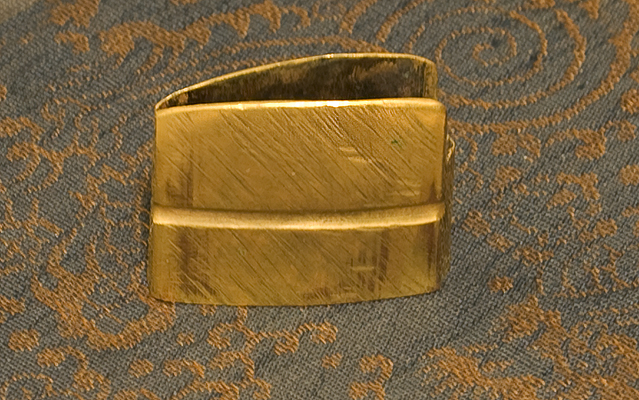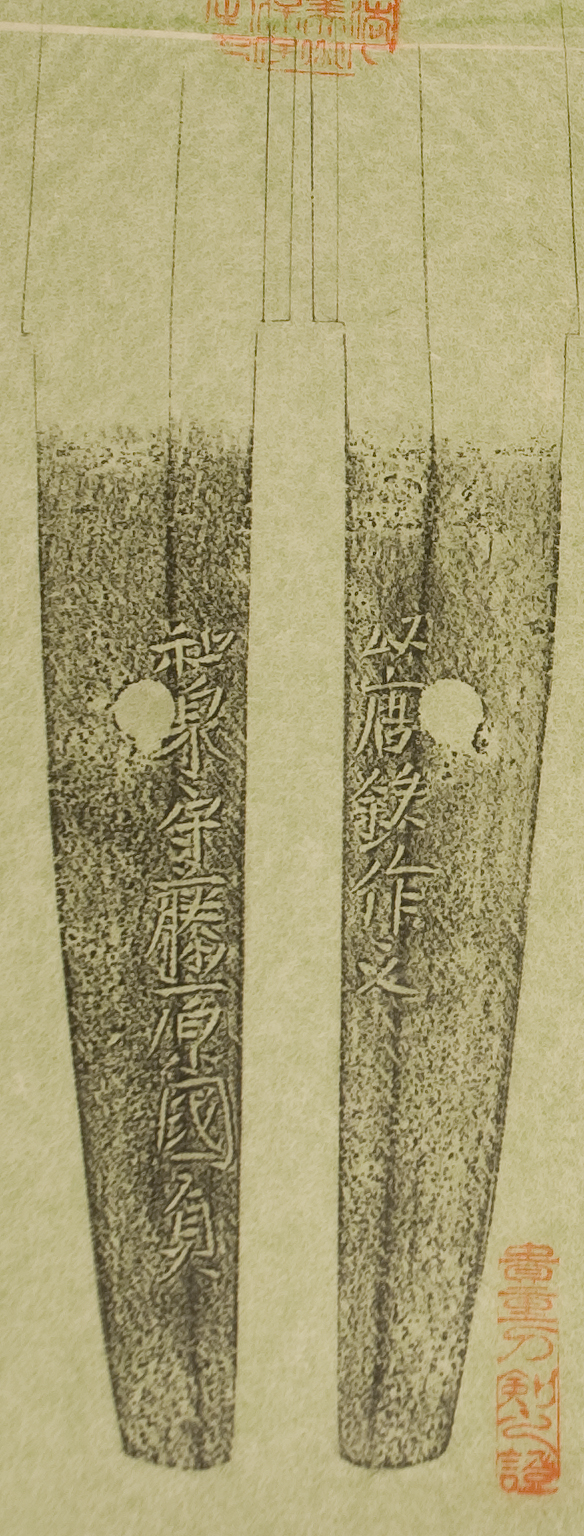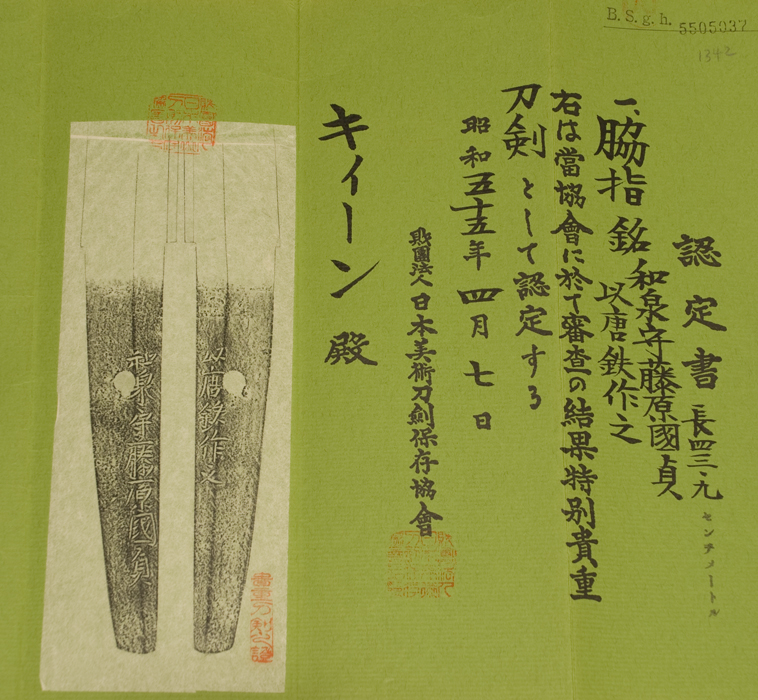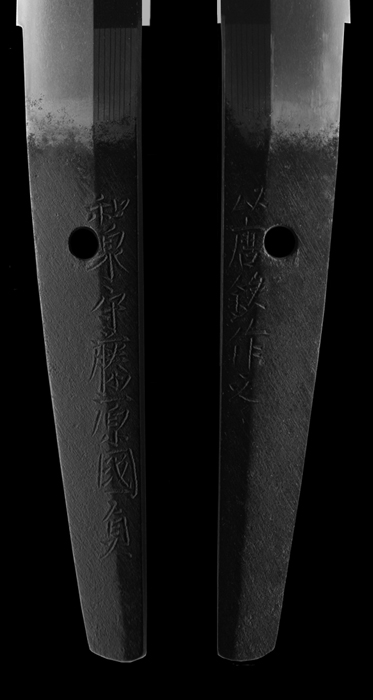|
| |||||||||||||||||||||||||||||||||||||||||||||||||||
Hamon : Nie-deki gunome midare. The nioi-guchi is wide. Slight yakidashi. There are ashi and tobiyaki. Kinsuji and inazuma are present. Several tobiyaki become larger and elongated in shape.
Boshi : Hakikake with abundent nie and a medium kaeri.
Kitae : Itame that is covered in ji-nie. There are chikei. The hada becomes masame near the ha.
About this sword : The first generation Kunisada was born in the seventeenth year of Tensho (1589). His place of birth was central Kyushu, in Obi-han in the prefecture of Hyuga. He became a student of Horikawa Kunihiro, who was also from Obi, Hyuga. Many people believe that Kunisada was actually a student of Kunitomo, one of Kunihiro's leading students. It is also most probable that Kunitomo was Kunihiro's nephew. Like Kunihiro and Kunisada, Kunitomo was also born in Obi, Hyuga.
After spending several years as an apprentice under Kunitomo, Kunisada became independent and moved to Osaka. Another student of Kunitomo's, Kunisuke, also moved to Osaka about this same time.
Osaka was then a newly developing town. Toyotomi Hideyoshi began construction of his huge castle there in 1584 and it was completed in 1585. Hideyoshi died in 1598 and the lord of the castle became his son, Hideyori. The castle was destroyed by Tokugawa Ieyasu in the so called Osaka Winter and Osaka Summer campaigns of 1614-1615. The city of Osaka was also destroyed. Hideyori and his mother, Yodo, both committed suicide at the end of the war. The Tokugawa Shogunate then established an office in Osaka in 1619. It was called the Osaka Jodai. They started rebuilding the city and the castle at that time.
Kunisada worked steadily from 1623 to around 1645. He signed most of his blades with the mei, "Izumi-no-kami Fujiwara Kunisada". Sometimes he used "Izumi-no-kami Kunisada" or "At Osaka Izumi-no-kami Kunisada".
In the Japanese sword nakago inscriptions we have seen the use of Nanban tetsu and Olanda tetsu. Both were referring to iron materials imported mainly from the Netherlands. This example has a very rare ura mei of "Motte Kara-tetsu Saku Kore". The use of the kanji Kara (Same as Tang - as in Tang Dynasty) shows the high regard for the raw materials from mainland China that were acquired to make this blade. This is a very precious inscription and it adds significant empirical value to the blade.
The mei of this work bears the Izumi no kami title that Shodai Kunisada received in 1623 and it is Shodai Kunisada's jishinmei (mei he cut himself). We can tell this from close study of the strokes. Shinkai took over the responsibility of his father's (Shodai Kunisada) mei in 1645. So, we can date the sword to the time period of 1623-1645. For more information about the study of Shodai Kunisada's mei, please see our article here.
This blade is in full polish and it has no kizu. There are a few areas of coarse hada. Please see the photos. This comes with a 1980 NBTHK Tokubetsu Kicho paper from the Dallas Shinsa. It aslo comes with a shira-saya, habaki and a storage bag. A ubu zaimei work by a Jo Jo Saku smith and co-founder of the famous Osaka shinto tradition.
$8700
SALE $7900










 |

|

